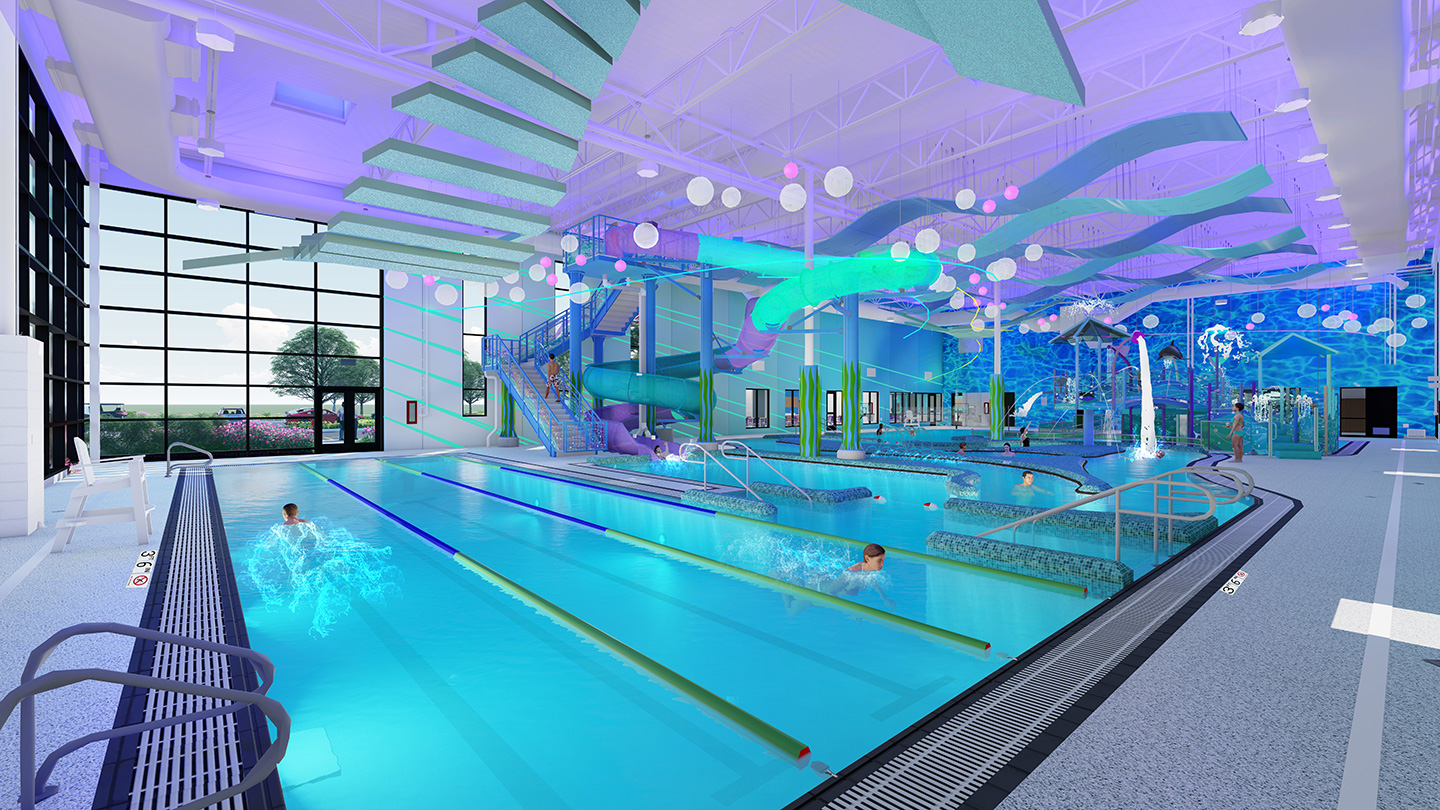Americans spend 90% of their time indoors. Whether that’s at work or school, in the car, or at home, we have increasingly become an indoor species. COVID has taught us many things about health and safety measures we can take within spaces to physically safeguard ourselves. However, it’s also reinforced the idea that the aesthetic qualities of those same spaces have a dramatic impact on how we feel. Recent studies have even begun to suggest that the quality of our indoor spaces plays a vital role in our mental health.
There are many things to address when considering the design of indoor spaces. With aquatics environments, it’s no secret that adequate ventilation and dehumidification must be carefully designed to remove dangerous chloramines, lower the probability of corrosion leading to equipment failure, and achieve a safe and comfortable space. This topic should be held as a high priority and not taken lightly, but addressing these issues simply comes more out of necessity as a physical safeguard for the occupants and the longevity of the space. This makes a building useful, but it does not create a quality space that makes us feel good. So, what does it take to appeal to our senses and generate excitement about the places we spend our time? One way to increase the experience within an aquatics environment is by introducing theming.

What Spaces can be Themed?
The first thing to consider with theming is the target audience. What age groups are expected to be using the facility, and what types of programming will be scheduled? Venues specifically intended for competition level swimming are probably not the best choice to introduce fully immersive theming. Complex interior choices may be seen as distracting for the athletes. Instead, consider using selective wall graphics to reinforce team spirit and motivation, or color-coordinated installations and details, providing insight into the branding and history of your organization. Venues intended for multipurpose use combining play, leisure, exercise, and youth swim make better candidates for developing a more whimsical space.
What are the Benefits of a Themed Environment?
Let’s face it, people visit an aquatics center primarily to use the pool. Some will return out of habit or necessity, like during the summer months or for swim practice, but others will determine their frequency of use by the quality of their experience.
- Creating a unique experience will drive traffic back to the facility and increase the number of repeat users
- A themed environment reinforces the space as a destination rather than an amenity
- Providing a unique environment is a differentiator
- Themed environments provide educational opportunities for children to learn about new environments, promote dramatic/fantasy play by encouraging them to act out a role associated with those environments, provoke interest in new subjects, and create immersive sensory learning opportunities
Creating a themed aquatic experience is more than designing murals and including elaborate waterslides. Thinking through the conceptual design involves all elements of the space, from top to bottom, and inside and out."
Jeffrey Keppler
What are the Design Considerations?
Creating a themed aquatic experience is more than designing murals and including elaborate waterslides. Thinking through the conceptual design involves all elements of the space, from top to bottom, and inside and out. Here are a few elements to consider when designing the space:
- Build a dedicated theming budget into the overall project budget. This doesn’t need to include pool structure or play features, but rather themed elements to make the space come alive.
- Consider different types of environments, not necessarily just nautical or tropical themes – outer space, jungle/forest, or even medieval castles give the opportunity to put a different twist on a known experience
- Determine an overall concept before considering details. Brainstorm ideas that can connect theming to multiple areas of the building, not just the natatorium (a building housing a pool). Consider ties to the exterior, entry sequence, arrival points, and views into the natatorium. Consider the movement of water and ways water features can mimic other motions in your theme.
- Think beyond available options for equipment, such as play features, fountains, and slides. Establish the basis of the theme with architectural gestures – wall and ceiling treatments, openings, articulation of the building envelope. The space itself can speak to a theme before complementing features are added.
- Consider integration of technology – color changing or moving lighting, themed audio or video integration
- Cohesive details – provide railing panels, color schemes, custom features, and decals with purposes to convey the theme
- Material selections – use non absorptive, non-corrosive, paintable materials
- Consider involving local artists to custom fabricate specialty components
A themed environment will require more time, effort, and money up front to be successful, but it will also inspire, excite, and engage users of the space.